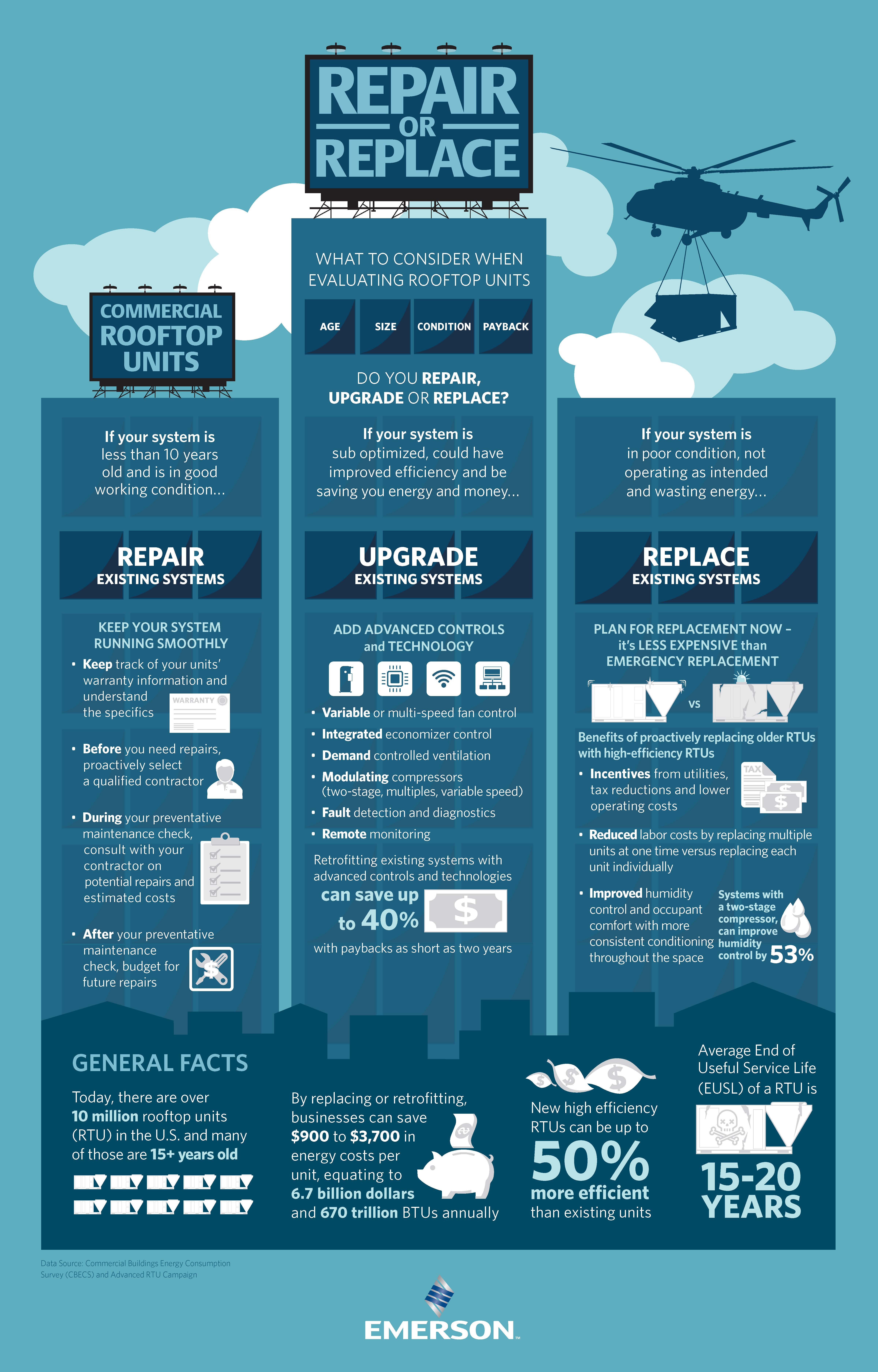Rooftop AC Units (RTUs) serve 70 percent of the cooled commercial floor space in North America, which equates to nearly 40 billion square feet. To make this possible, rooftop air conditioners consume more energy than any other type of cooling technology – 4.3 quads each year, which is the equivalent of 34 billion gallons of gasoline.
So why are they so common? Their small footprint and lightweight design reduce the impact on roof construction and structural support, and they effectively perform the basics of heating, cooling, and ventilation.
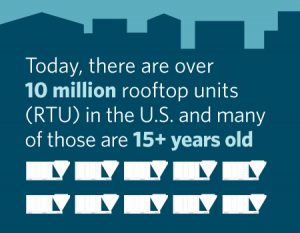
Although they are effective, older RTUs operate at lower efficiency levels and commonly have operational issues. Below are some key areas to consider when deciding whether to repair, upgrade, or replace your system.
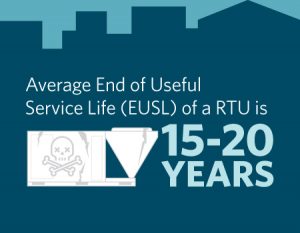
Excessive Energy Usage
- Over-sized equipment
- Constant volume fan operation
- Limited part-load operation
- Code minimum energy efficiency
- Lack of advanced features
Operational Issues
- Service deficiencies
- Deferred maintenance
- Improper set points
- Duct leakage
- Inability to adapt to changes in building load realities
Destruction of capital
- Ineffective preventative maintenance
- Unnecessary energy expenditure
- Costly preventable repairs
- Short-term results from recommissioning efforts
- Expensive premature replacement programs
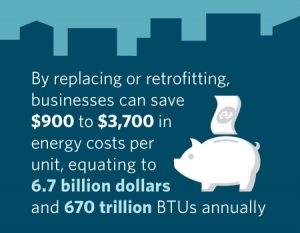
While there are ways to improve upon your current situation, costs can add up quickly. Many building owners and facility managers choose to avoid spending money repairing these old rooftop air conditioners, and take the opportunity to invest in new equipment. With the new systems, you are getting something that has increased efficiency, is more durable, and has more service-friendly features.
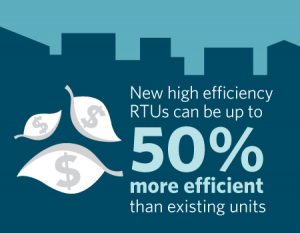
Whatever the choice may be, it’s important to do what is best depending on the situation and circumstances. To assist in making this decision, check out this helpful infographic.

